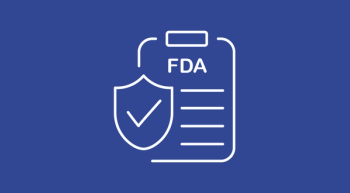
Osimertinib Is Considered Standard of Care for Patients With Resected EGFR+ NSCLC
Overall survival data from the phase 3 ADUARA trial has further supported the use of osimertinib to treat EGFR-mutant non–small cell lung cancer in the adjuvant setting.
In light of the overall survival (OS) analysis from the phase 3 ADAURA trial (NCT02511106), lung cancer specialists consider osimertinib (Tagrisso) to be the established standard-of-care treatment option for patients with resected EGFR-mutant non–small-cell lung cancer (NSCLC), according to a presentation by Masahiro Tsuboi, MD, at the 24th Annual International Lung Cancer Congress®.1
“The ADAURA study [NCT02511106] has demonstrated a statistically significant and clinically meaningful OS benefit with adjuvant osimertinib vs placebo in patients with EGFR-mutated stage IB-IIIA NSCLC that has been completely resected,” said Tsuboi, department director and chair in the department of thoracic surgery and oncology at the National Cancer Center Hospital East. “Earlier treatment heightens the chance for cure, which makes testing in this setting even more important.”
Following complete tumor resection, patients with stage IB to IIIA EGFR-mutated NSCLC were randomly assigned to receive osimertinib at 80 mg once daily or a matched placebo.
According to findings published in the New England Journal of Medicine,2 across all patients enrolled in the study, the 5-year OS rate was 88% with osimertinib (n = 339) compared with 78% for placebo (n = 343; HR, 0.49; 95% CI, 0.34-0.70; P < .001). In patients with stage II and IIIA disease specifically, the 5-year OS rate was 85% in the osimertinib arm (n = 233) compared with 73% for those in the placebo group (n = 237; HR, 0.49; 95% CI, 0.33-0.73; P < .001).2
The OS benefit remained consistent in patients who had or had not received chemotherapy. In those specifically with stage IIIA disease, the 5-year OS rate was 85% with osimertinib (n = 115) vs 67% with placebo (n = 119; HR, 0.37; 95% CI, 0.20-0.64).2 “Adjuvant osimertinib benefits were generally consistent across all subgroups, including by stage and chemotherapy,” Tsuboi said.
Median follow-up for OS across all patient groups was 61.5 months, and median OS had not yet been reached. At this analysis, 22% of patients in the osimertinib arm had received a subsequent therapy compared with 54% of those in the placebo group. In the placebo group, 43% of patients received osimertinib and 62% received other EGFR-directed TKIs. The most common other EGFR-targeted TKIs included gefitinib (Iressa; 30%), afatinib (Gilotrif; 16%), and erlotinib (Tarceva; 13%). Other interventions included chemotherapy in 25% of patients and nearly 29% had radiotherapy. Other types of anticancer therapy, including VEGF inhibitors and immune checkpoint inhibitors, were received by 16% of patients.2
In the double-blind ADAURA study, adjuvant chemotherapy was administered for eligible patients prior to osimertinib, with 60% of patients receiving this intervention in each arm. Patients were primarily enrolled in Asia (38.4%), followed by the United States (23.9%) and Europe (14.1%).
Patient characteristics were very well balanced between arms, Tsuboi said. In the osimertinib group, the median age was 64 years (range, 30-86), and 68% were never smokers, with just 1% being current smokers. The most common resection type was lobectomy (97%), and most (41%) had N0 disease. Stages were balanced between IB (32%), II (34%), and IIIA (35%). Identified EGFR alterations at baseline were exon 19 deletions (55%), L858R mutations (45%), and p.Thr790Met (1%).2
The primary end point of the study was disease-free survival (DFS), which was statistically significantly improved with adjuvant osimertinib.3 In patients with stage IB to IIIA disease, the median DFS was 65.8 months (95% CI, 61.7-not calculated [NC]) with osimertinib compared with 28.1 months (95% CI, 22.1-35.0) with placebo (HR, 0.27; 95% CI, 0.21-0.34). In those with stage II or IIIA disease only, the median DFS with osimertinib was 65.8 months (95% CI, 54.4-NC) compared with 21.9 months (95% CI, 16.6-27.5), respectively (HR, 0.23; 95% CI, 0.18-0.30).
“DFS was extended by [approximately] 44 months, which is very meaningful to patients,” Tsuboi said. “Based on these results, osimertinib was recommended in this setting in many guidelines.”
At the DFS analysis,3 adverse events (AEs), regardless of cause, were reported in 98% of those receiving osimertinib and for 90% of those in the placebo arm. Grade 3 or higher AEs were seen in 23% of those in the osimertinib group and for 14% of those in the placebo arm and led to treatment discontinuation for 13% and 3% of patients, respectively. Tsuboi noted that AEs were consistent at the OS analysis and were mostly mild and manageable.
Further Studies Underway
Investigators are continuing to explore the role of osimertinib in NSCLC to refine its benefits and to discover the optimal patient populations for administration. Additional analyses from the ADAURA trial are also underway to examine circulating tumor DNA as well as minimal residual disease (MRD) status. These analyses will help to identify resistance mechanisms that could inform future research, Tsuboi said.1
“We may be able to find those who aren’t at very high risk [of recurrence] using MRD,” he said. “Patient selection is very important, many patients with stage I or II disease can be cured with chemotherapy alone.”
Osimertinib is also being explored in several other large studies for patients with resectable NSCLC. The phase 3 NeoADAURA trial (NCT04351555) is examining osimertinib with or without chemotherapy compared with chemotherapy alone as a neoadjuvant therapy for patients with stage II/IIIB, N2, EGFR-mutated NSCLC. Additionally, the phase 3 ADAURA2 trial (NCT05120349) is exploring adjuvant osimertinib in patients with stage IA2 or IA3 EGFR-mutant NSCLC, following complete tumor resection. The phase 2 open-label 5-year TARGET study (NCT05526755) is looking at adjuvant osimertinib in stage II/IIIB EGFR-mutant NSCLC. In this study, patients will receive either an 80-mg or 40-mg dose once daily.
Outside of EGFR-mutated NSCLC, Tsuboi closed his talk by noting that other targeted therapies are also being explored in the adjuvant setting for patients with ALK-positive and RET-positive disease. The phase 3 ALINA study (NCT03456076), which enrolled 257 patients, is comparing alectinib (Alecensa) with adjuvant platinum-based chemotherapy for patients with completely resected stage IB to stage IIIA ALK-positive NSCLC. “The goal is to have results from this trial presented later this year,” he said.
Another trial of interest, according to Tsuboi, is the phase 3 LIBRETTO-432 trial (NCT04819100), which is examining selpercatinib (Retevmo) after surgery or radiation for patients with stage IB-IIIA RET fusion–positive NSCLC. This trial is still enrolling with the goal of recruiting 170 participants.
References
- Tsuboi M. Update on early-stage, driver mutation–positive NSCLC. Presented at: 24th Annual International Lung Cancer Congress; July 27-29, 2023; Huntington Beach, CA.
- Tsuboi M, Herbst RS, John T, et al; ADAURA Trial Investigators. Overall survival with osimertinib in resected EGFR-mutated NSCLC. N Engl J Med. 2023;389(2):137-147. doi:10.1056/NEJMoa2304594
- Herbst RS, Wu Y-L, John T, et al. Adjuvant osimertinib for resected EGFR-mutated stage IB-IIIA non–small-cell lung cancer: updated results from the phase III randomized ADAURA trial. J Clin Oncol.2023;41(10):1830-1840. doi:10.1200/JCO.22.02186
Newsletter
Knowledge is power. Don’t miss the most recent breakthroughs in cancer care.































































































